A sweet pea teepee can create the most stunning scented spectacle in a backyard – learn how to make your own in 5 simple steps
There are few things better than a living, floral tent you can sit under all summer long
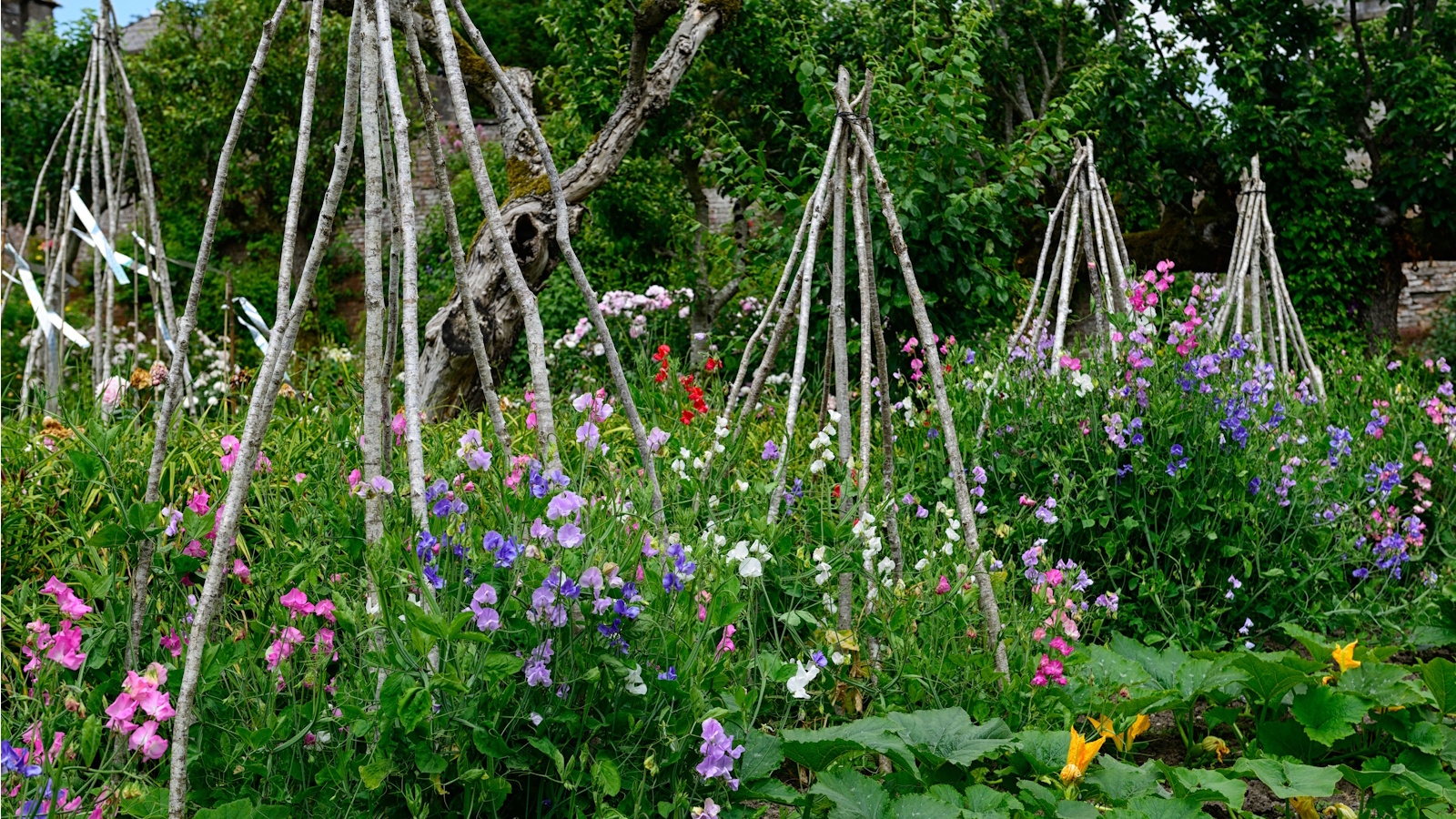

Sweet peas are some of the most fragrant cut flowers to bloom in summer. Not only do their wide range of vibrant and pastel hues make for stunning arrangements, but their foliage and wispy tendrils are just as enchanting. But, growing them to display in vases isn't the only way to make the most of these charming blooms; you can also make a sweet pea teepee for a floral spectacle in your yard.
It's best to grow sweet peas from seed in fall or early spring before planting out seedlings in mid-spring. This is the perfect opportunity to train your sweet pea seedlings to climb a tent-like structure, eventually blossoming into a teepee for you to sit under and take in their glorious scents throughout the summer months.
Of course, for this garden project to be successful, you need to use climbing sweet pea varieties. With your selection made, you can follow these five steps from a cut flower growing expert to make a sweet pea teepee for your summer garden.
What you need to make a sweet pea teepee

Before getting started with this garden project, you need to get a few materials together. Flower growing expert Lisa Fontanarosa says you will need:
- x9 7ft bamboo canes, from Amazon
- Garden string/twine, from Amazon
- All-purpose compost, from Walmart
- 16 sweet pea plants. Find sweet pea seeds at Burpee
How to make a sweet pea teepee
Bear in mind that when you make a sweet pea teepee, you also have to continue providing care for your sweet peas. This includes keeping sweet pea seedling problems at bay, such as preventing them from rotting and managing moisture levels correctly.
1. Create a tent shape with bamboo canes
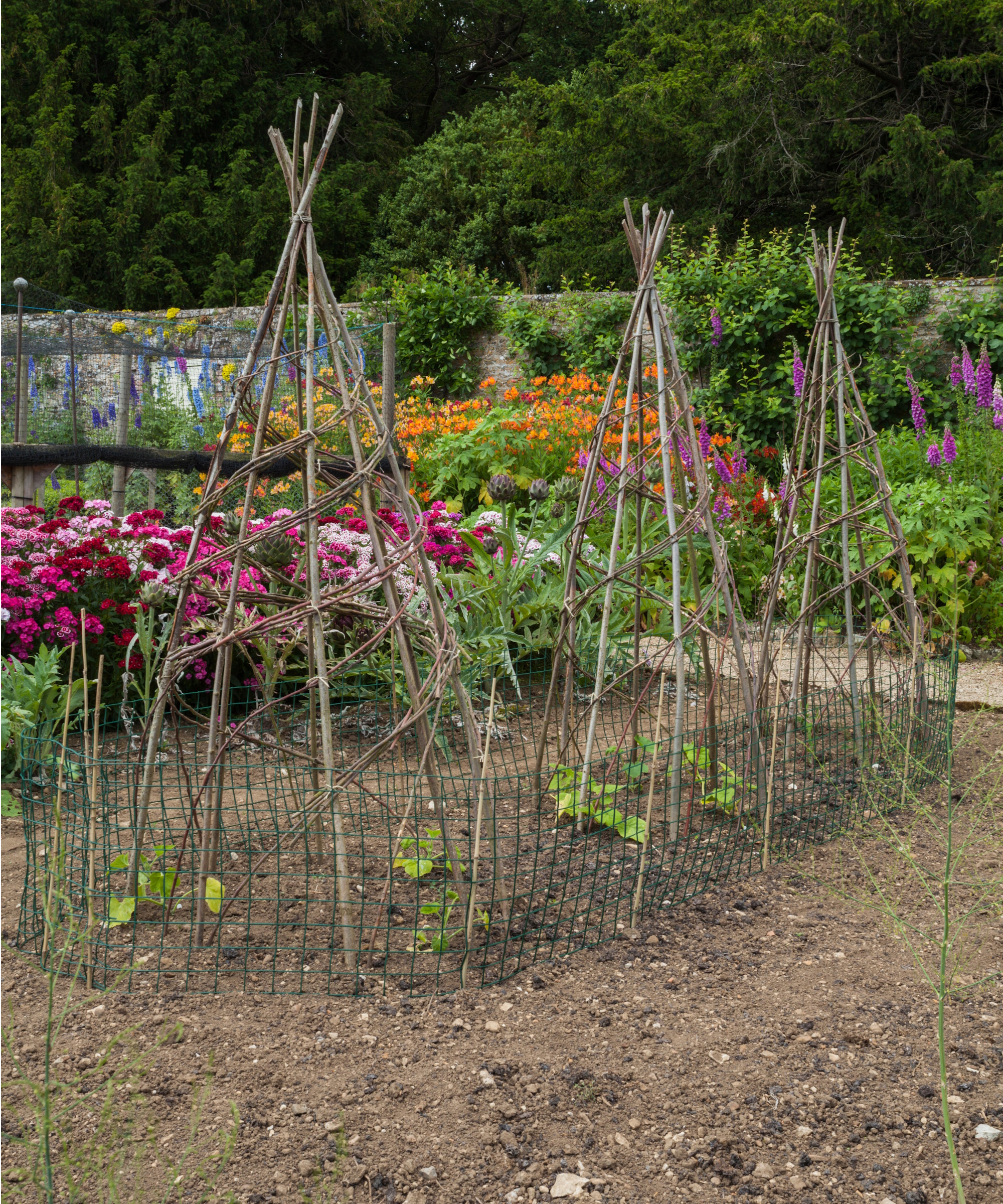
The first thing you need to do is get your structure set up. You'll need your bamboo canes and garden string to hand.
'Position the bamboo canes to create a tent-like shape, then tie them together at the top,' Lisa explains.
Design expertise in your inbox – from inspiring decorating ideas and beautiful celebrity homes to practical gardening advice and shopping round-ups.
It's similar to how you would put together a wigwam as a climbing plant support, but instead of creating a spherical shape, you need to leave an opening.
Keep in mind the size of the opening. Who will be going inside the teepee? If you're creating it as a backyard idea for kids, you can create a smaller teepee opening. If it's for your own enjoyment and for other adults, you may want to consider making it larger for easier access.
Bamboo canes can be inserted into the ground to secure them, or you can use tools like these U-shaped garden stakes from Amazon. Lisa recommends pushing them into the ground at a depth of four inches.

Lisa is a stylist, gardener, floral creator, and creative consultant who has traveled all over the world working with A-list style makers and collecting beautiful objects for her shop and home. She creates luxurious spaces for private clients and works with designers who create custom pieces for some of the biggest names in the business, including Bergdorf Goodman, Barneys, Colette, and Bon Marche.
2. Lay compost at the base of your teepee
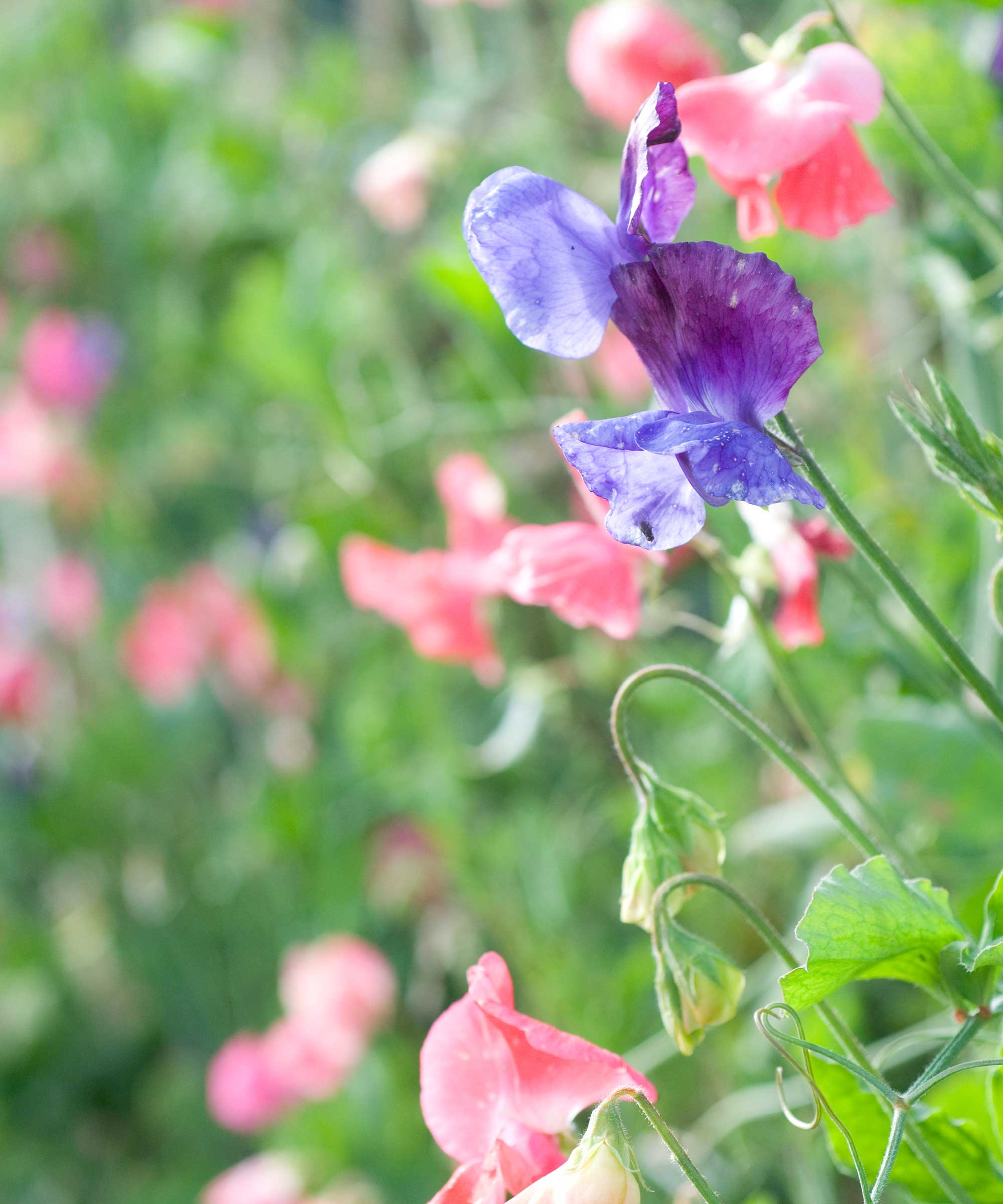
In order for sweet pea seedlings to climb your teepee, they need to have the right soil type and growing conditions to support their growth.
Sweet peas do best with a well-draining soil full of essential plant nutrients. That's why Lisa recommends a good-quality all-purpose compost. Of course, you can also try making your own compost to use.
'Dig a circular trench around the base, then mix a bit of compost in with the soil,' Lisa says.
Your trench should be around 1ft in depth. You can use this trowel with a depth marker from Amazon to do this. Don't forget to clean garden tools after use to prevent rust and keep them in good condition.
3. Use string to create a trellis on your teepee
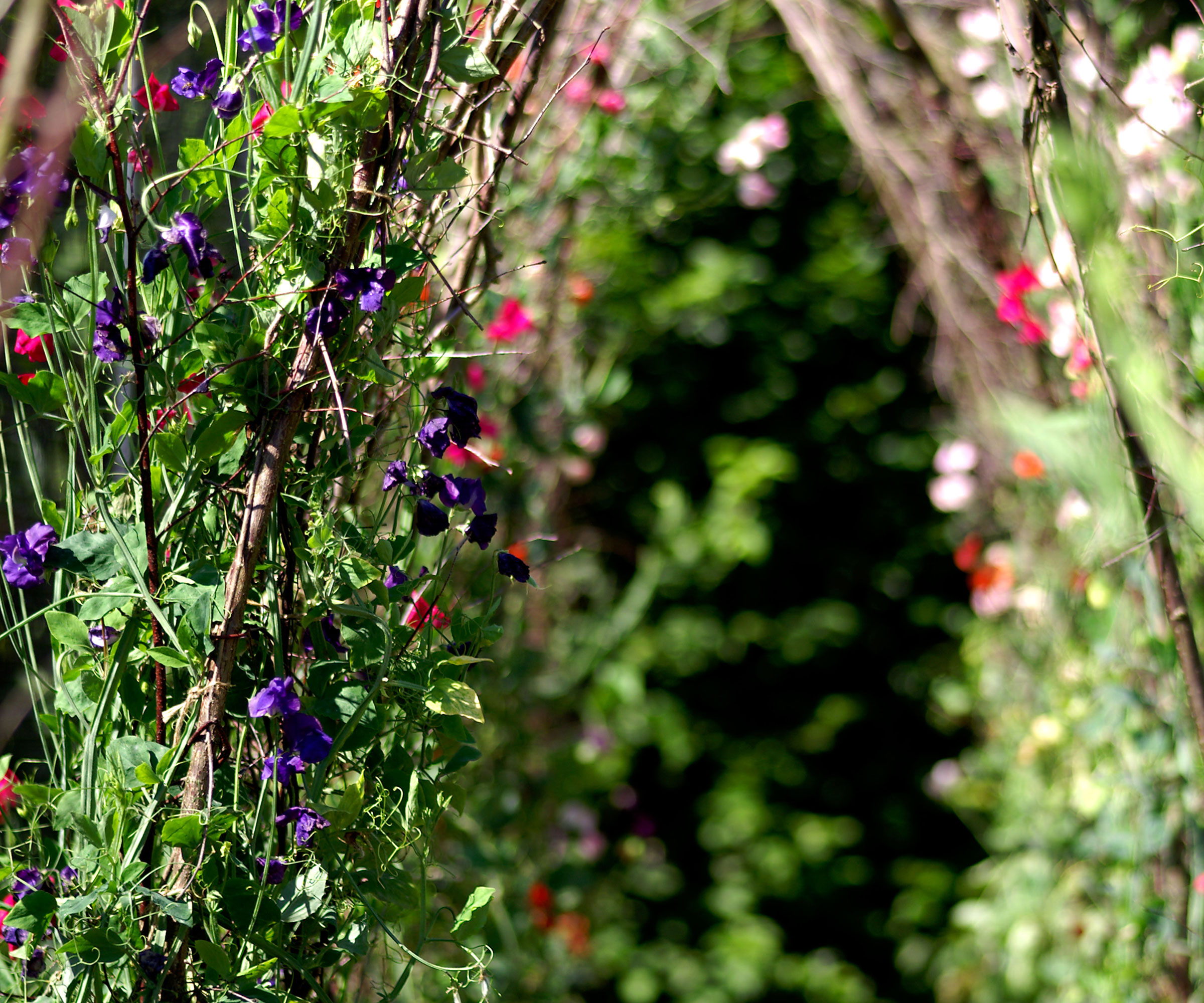
The next thing to do is create a trellis for the sweet peas to climb. You can do this simply by adding garden string to the structure you have already built.
'Wind the string once around each pole at the top of the teepee, then move it to the next pole,' Lisa advises. 'Remember to leave room for an entrance gap,' she adds.
You should do this a few times so the trellis has multiple horizontal rows.
'Without cutting the string, move about six inches downwards on the same pole. From there, start a new row going back in the direction you came from. Repeat until you almost reach the bottom of your den,' Lisa describes.
You can use this ruler from Walmart to be precise in your measurements.
4. Plant your sweet pea seedlings
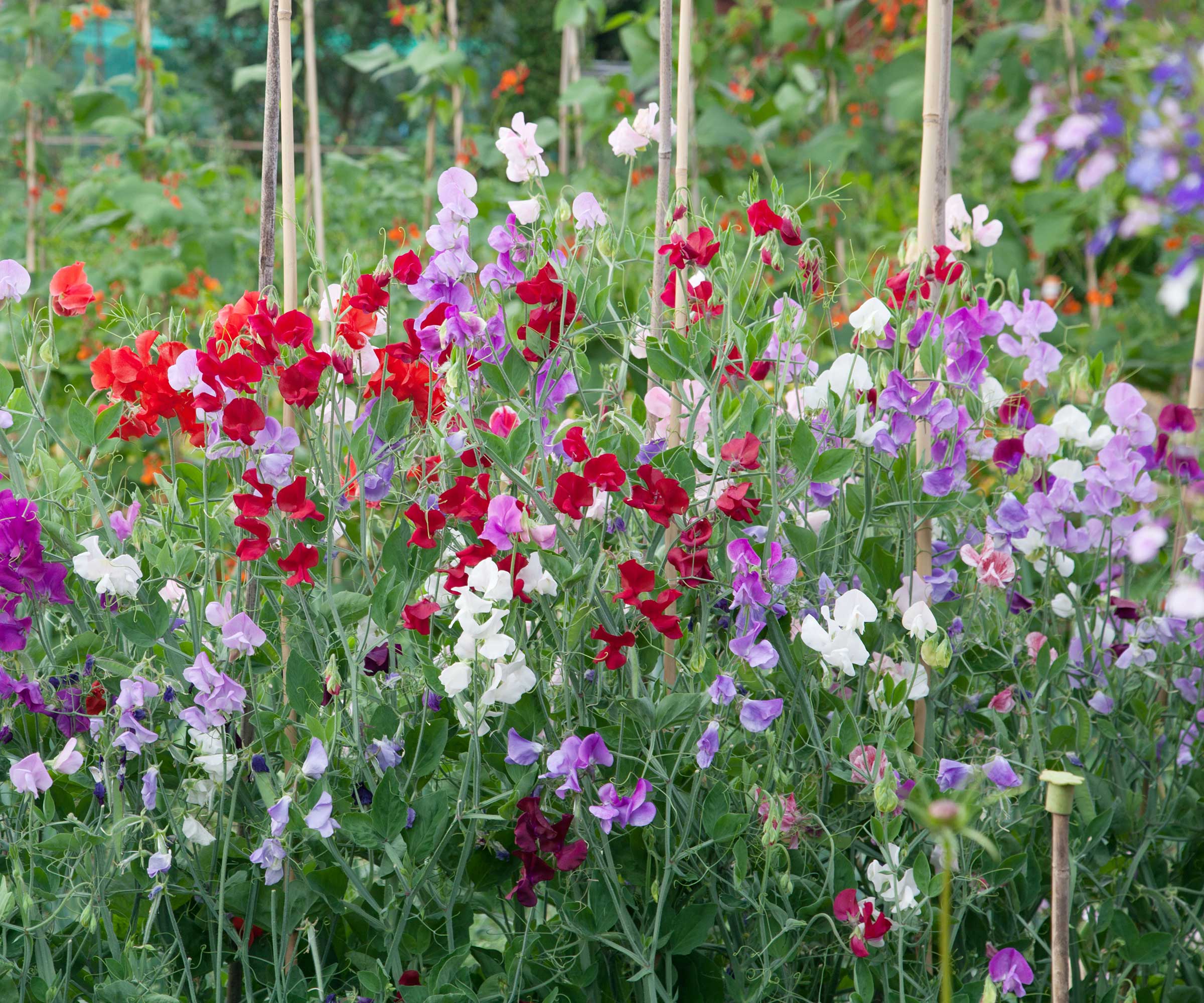
With your teepee and trellis ready, you can start planting your sweet pea plants.
'Fill in the gaps between the bamboo canes with sweet pea and pea plants, leaving roughly eight inches between each plant,' Lisa recommends.
They're best planted around an inch deep with compost covering the base of the stem. This will allow the roots to have sufficient room to grow and establish, supporting the plants' ability to bloom.
Also growing peas alongside your sweet peas, as Lisa suggests, will provide some variation and make your sweet pea teepee an edible, as well as ornamental, feature for your backyard.
Find pea seeds at Burpee.
5. Water your sweet pea seedlings well
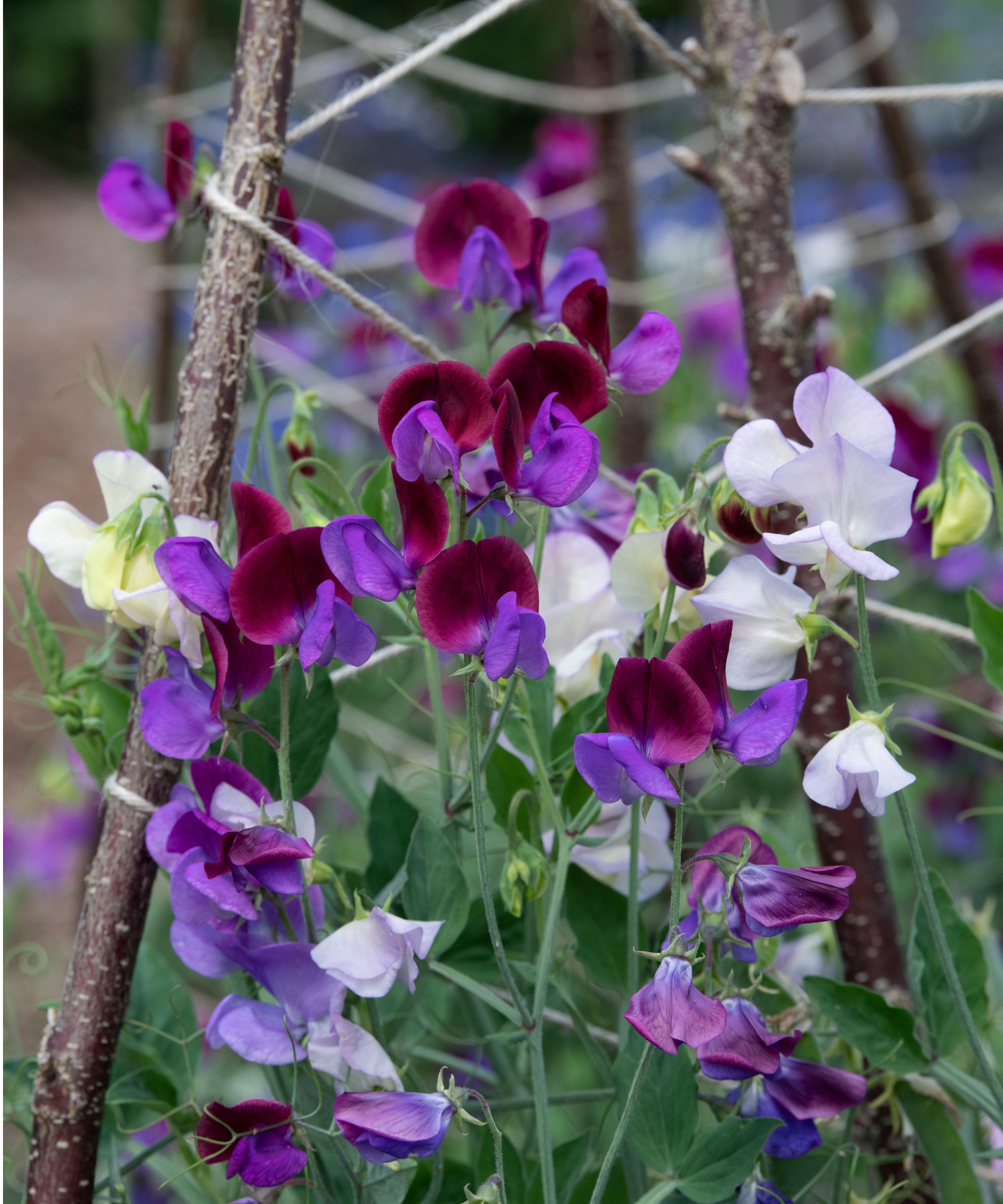
The final step is to nurture your sweet peas to grow. This includes giving them a deep watering to help them settle and establish after planting - use this watering can from Amazon to water around the base of your teepee.
'Water your plants regularly, weave them under the string, and enjoy when in bloom,' says Lisa.
Once fully in bloom and covering your teepee, you can sit inside and enjoy this fragrant garden feature. Sweet peas are also cut and come again flowers, so make sure to cut them to enjoy in floral arrangements, too.
FAQs
How long do sweet peas take to flower?
From seed, sweet peas typically take between 12-14 weeks to flower. After they have started climbing, it usually takes around four to six weeks to spot blooms. They then flower from June to September, and you can encourage continuous blooms by cutting them.
Do sweet peas need fertilizing?
Sweet peas benefit from fertilizer in spring and summer. In particular, a slow release fertilizer (like this one from Amazon) can be effective. Apply when first planting seedlings and again when they start to flower in summer.
A sweet pea teepee is a great addition to cottage garden borders and cut flower gardens alike. If you're looking for ways to garden with children, this a fun project to do with them and it will continue giving them enjoyment all summer long.

Tenielle is a Gardens Content Editor at Homes & Gardens. She holds a qualification in MA Magazine Journalism and has over six years of journalistic experience. Before coming to Homes & Gardens, Tenielle was in the editorial department at the Royal Horticultural Society and worked on The Garden magazine. As our in-house houseplant expert, Tenielle writes on a range of solutions to houseplant problems, as well as other 'how to' guides, inspiring garden projects, and the latest gardening news. When she isn't writing, Tenielle can be found propagating her ever-growing collection of indoor plants, helping others overcome common houseplant pests and diseases, volunteering at a local gardening club, and attending gardening workshops, like a composting masterclass.
You must confirm your public display name before commenting
Please logout and then login again, you will then be prompted to enter your display name.